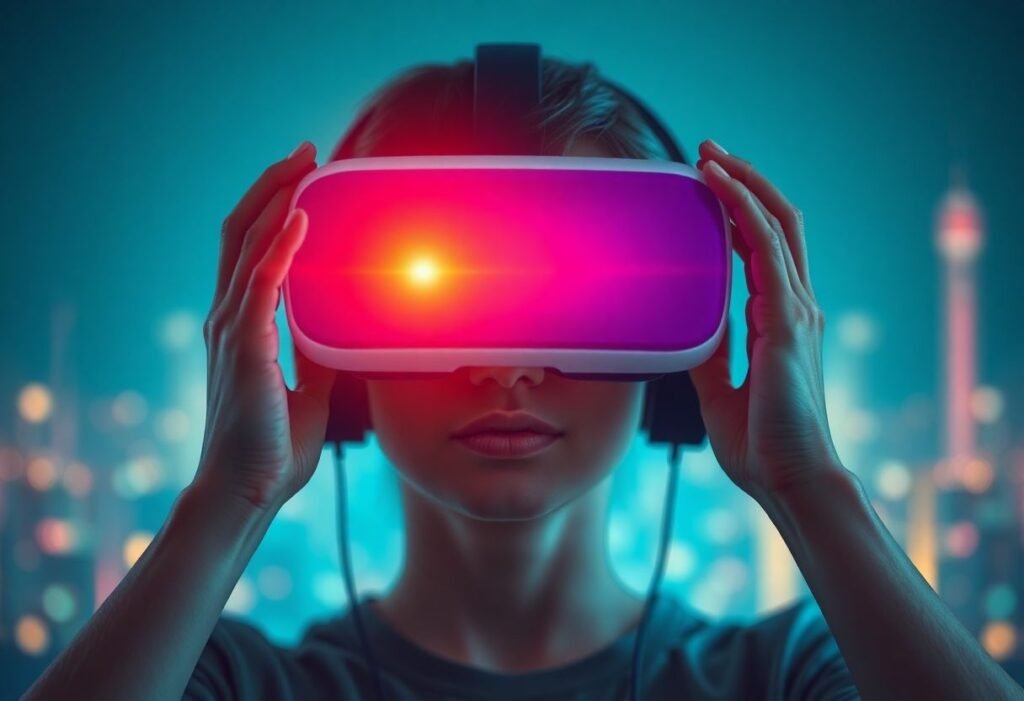Virtual reality (VR) is revolutionizing various fields, and its impact on mental health is particularly noteworthy within the realm of innovation. By providing immersive experiences, VR offers therapeutic possibilities that were unimaginable before. The integration of technology and healthcare aims to enhance well-being, and understanding this intersection is critical as it opens new pathways for treatment in mental health.
The Therapeutic Potential of Virtual Reality
The therapeutic potential of virtual reality in mental health has gained significant attention in recent years. Studies indicate that VR can create safe environments for patients to confront their fears, making it a valuable tool for treating conditions like PTSD and anxiety disorders. Therapists can guide patients as they navigate these VR scenarios, allowing for realistic exposure without the risks associated with real-life situations. This innovative approach allows individuals to process traumatic experiences in a controlled manner, leading to effective desensitization.
Innovative Treatments for Anxiety and Phobias
Anxiety disorders and phobias can significantly impact an individual’s quality of life. With virtual reality therapy, patients participate in simulations that replicate their fears in a safe setting, allowing for gradual exposure. For instance, someone afraid of flying can experience a simulated flight with a therapist present. The gradual exposure helps in understanding and managing anxiety responses. This technique not only empowers patients but also reinforces coping strategies, showcasing the transformative role of technology in therapeutic practices.
Benefits of Immersive Experiences on Mental Health
Immersive experiences facilitated by VR technology have been shown to provide numerous psychological benefits. These experiences can result in decreased feelings of isolation and enhanced emotional connection. Moreover, VR can aid in practicing mindfulness and relaxation techniques, such as guided meditations in serene virtual environments. Research has demonstrated that engaging with these immersive settings can lead to reduced stress levels and improved overall mental wellness, highlighting the importance of innovation in mental health treatments.
Enhancing Cognitive Behavioral Therapy with VR
Cognitive Behavioral Therapy (CBT) is a widely used treatment modality for various mental health challenges. Integrating virtual reality into CBT can enhance its effectiveness by including visual stimuli that mimic real-life situations, thus improving practice outcomes. For example, during a session, therapists can expose patients to VR scenarios that provoke anxiety but are controlled to allow for skill development. This innovative blend of technology and traditional therapy techniques not only increases engagement but also deepens the therapeutic experience.
Challenges and Considerations in VR Mental Health Applications
Despite promising benefits, several challenges need to be addressed when implementing VR in mental health applications. Accessibility and affordability of VR technology can limit patient access, as not everyone can afford the necessary hardware or software. Additionally, therapists must be adequately trained to utilize these technologies effectively within a therapeutic context. Ethical concerns around patient safety and privacy must also be prioritized as VR becomes more ingrained in treatment options. Addressing these challenges is crucial for maximizing the potential of VR in mental health.
The Future of Virtual Reality in Mental Health
As advancements in virtual reality technology continue to grow, the potential applications in mental health treatment are boundless. Future innovations could involve more personalized and interactive experiences that align with individual patient needs. Pharmaceutical companies and tech startups are already investing in developing tailored VR programs that integrate mental health assessments. By embracing this combination of healthcare and technology, we may be on the brink of a revolution in mental health therapies, ultimately improving outcomes for millions.
Disclaimer: This article is for informational purposes only and does not constitute medical advice or treatment.





















